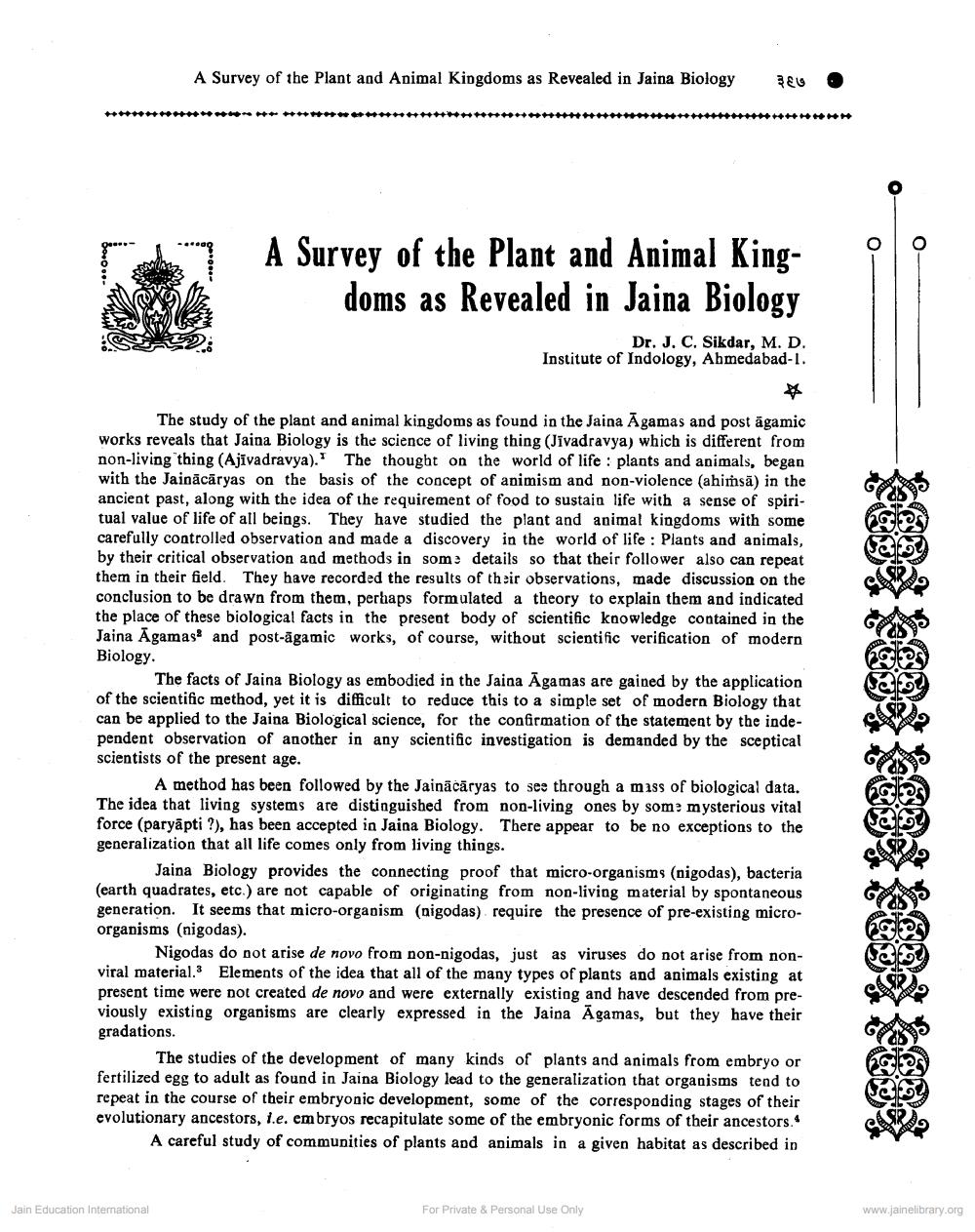________________
A Survey of the plant and Animal Kingdoms as Revealed in Jaina Biology
REL
ili
A Survey of the Plant and Animal King-
doms as Revealed in Jaina Biology
Le &
Dr. J. C. Sikdar, M. D. Institute of Indology, Ahmedabad-1.
The study of the plant and animal kingdoms as found in the Jaina Āgamas and post agamic works reveals that Jaina Biology is the science of living thing (Jivadravya) which is different from non-living thing (Ajīvadravya).' The thought on the world of life : plants and animals, began with the Jainācāryas on the basis of the concept of animism and non-violence (ahiṁsā) in the ancient past, along with the idea of the requirement of food to sustain life with a sense of spiritual value of life of all beings. They have studied the plant and animal kingdoms with some carefully controlled observation and made a discovery in the world of life : Plants and animals, by their critical observation and methods in some details so that their follower also can repeat them in their field. They have recorded the results of their observations, made discussion on the conclusion to be drawn from them, perhaps formulated a theory to explain them and indicated the place of these biological facts in the present body of scientific knowledge contained in the Jaina Agamas and post-agamic works, of course, without scientific verification of modern Biology
The facts of Jaina Biology as embodied in the Jaina Āgamas are gained by the application of the scientific method, yet it is difficult to reduce this to a simple set of modern Biology that can be applied to the Jaina Biological science, for the confirmation of the statement by the independent observation of another in any scientific investigation is demanded by the sceptical scientists of the present age.
A method has been followed by the Jainācāryas to see through a mass of biological data. The idea that living systems are distinguished from non-living ones by some mysterious vital force (paryapti?), has been accepted in Jaina Biology. There appear to be no exceptions to the generalization that all life comes only from living things.
Jaina Biology provides the connecting proof that micro-organisms (nigodas), bacteria (earth quadrates, etc.) are not capable of originating from non-living material by spontaneous generation. It seems that micro-organism (nigodas) require the presence of pre-existing microorganisms (nigodas).
Nigodas do not arise de novo from non-nigodas, just as viruses do not arise from nonviral material. Elements of the idea that all of the many types of plants and animals existing at present time were not created de novo and were externally existing and have descended from previously existing organisms are clearly expressed in the Jaina Āgamas, but they have their gradations.
The studies of the development of many kinds of plants and animals from embryo or fertilized egg to adult as found in Jaina Biology lead to the generalization that organisms tend to repeat in the course of their embryonic development, some of the corresponding stages of their evolutionary ancestors, i.e. embryos recapitulate some of the embryonic forms of their ancestors.
A careful study of communities of plants and animals in a given habitat as described in
Jain Education International
For Private & Personal Use Only
www.jainelibrary.org




